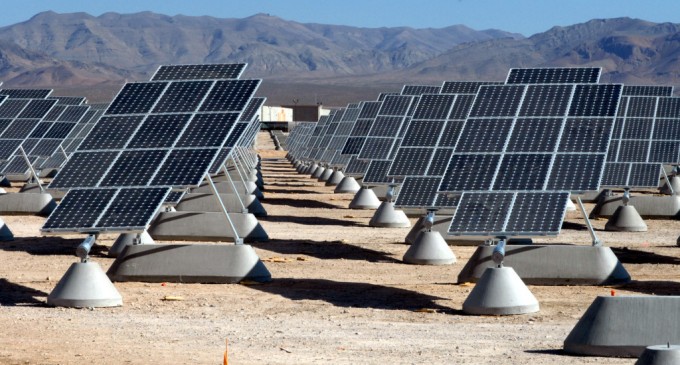GOLD Fields will start a six-month study into solar power to reduce its reliance on Eskom’s increasingly expensive and uncertain power supply.
Gold Fields has just the South Deep mine left in SA after it unbundled three labour-intensive mines into new firm Sibanye Gold two years ago.
South Deep used 100MW, but Gold Fields wanted to cut exposure to the state utility by looking at a number of alternative power supplies, including setting up its own solar energy plant, CEO Nick Holland said after a talk at the Gordon Institute of Business Science (Gibs).
 Gold Fields was prepared to work with Sibanye, which has internal electricity generation plans, including solar and coal-fired power. “We are about to start a study to potentially do between 20MW and 50MW of solar,” he said on Wednesday.
Gold Fields was prepared to work with Sibanye, which has internal electricity generation plans, including solar and coal-fired power. “We are about to start a study to potentially do between 20MW and 50MW of solar,” he said on Wednesday.
“Are we going to have security of supply from Eskom going into the future? Eskom is looking at double-digit cost increases every year. Look at the exponential effect of that.
“This study may trigger a decision to do something. It will always be a hybrid plan. We’ll never take Eskom completely out of the equation,” he said. “These solar plants are easy to install, the lead time isn’t long and you could have it up and running in two or three years.”
Sibanye CEO Neal Froneman has said the company wants to install a solar array and invest in a coal mine to supply coal to an independent power producer to secure cheap and sustainable energy for its four gold mines.
Sibanye has offered to buy platinum mines from Anglo American Platinum and the whole of Aquarius Platinum, which means it will need much more than the 500MW it has originally planned for.
Sibanye has an agreement with Waterberg Coal to own up to 51% of the company.
Sibanye wants to raise R3bn towards a modular 150MW solar power plant, with the first 50MW due at the end of 2017.
Sibanye would build the plant at its Driefontein mine, which is near South Deep. Asked about possibly sharing the plant with Sibanye, Mr Holland said: “We have to do our own study first to have a base line to work from, but I certainly don’t rule it out as a possibility.”
A difficulty in the coal-fired electricity plan would be using Eskom’s power lines, in an exercise called wheeling, to deliver electricity from the northern reaches of Limpopo to gold mines west of Johannesburg and in the Free State, as well as platinum mines near Rustenburg.
Meanwhile, during his address at Gibs, Mr Holland urged South African mining companies to embrace new technology and concepts at their operations to mine more cost-effectively in an increasingly difficult environment.
“Conventional mining is going to disappear over time even though it’s going to have a short-term impact on jobs. We will have to deal with that in different ways. We need to create a more safe environment by means of mechanisation and beyond that with automation.
Via: bdlive

